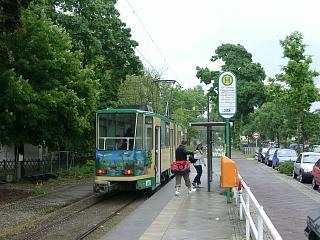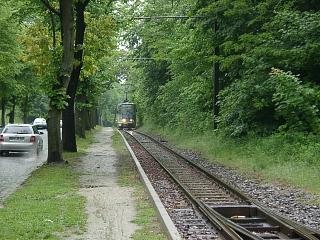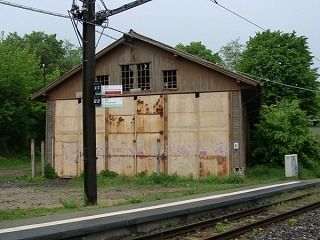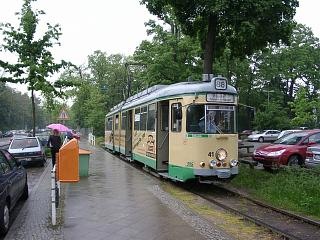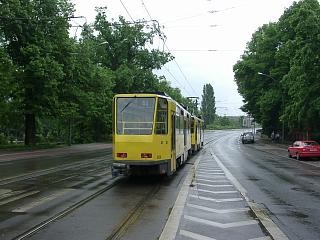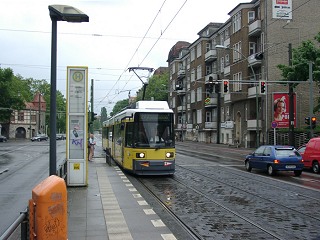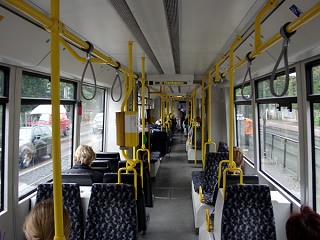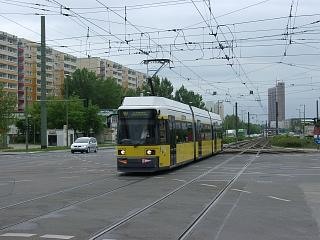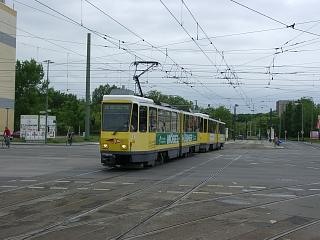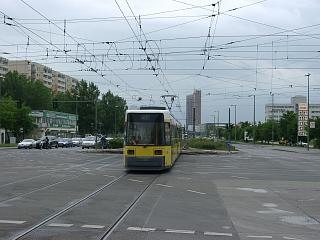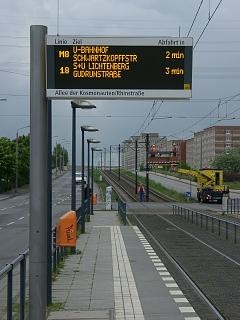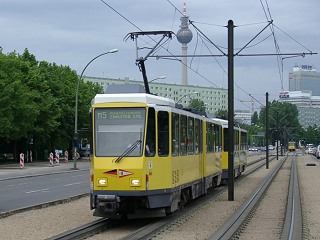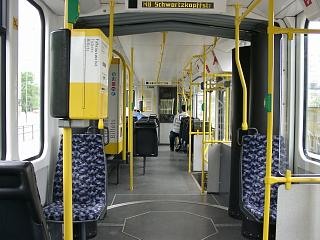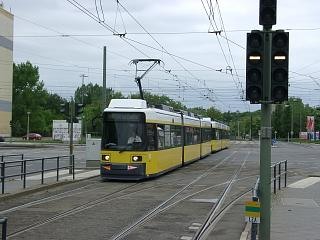budapest
other hungarian
close-up
lost rails
other countries
Berlin: a tale of two cities I.
I always wanted to visit Berlin, even during our family
visit to Germany in 1987. We didn't come here then at the end, so
I don't have memories of the german metropolis split in two, yet,
when I spent these few days here in 2005, I could still recognise
the signs of the quondam separation of East- and West-Berlin. Of course
one of the most striking differences is totally on topic here: there
are hardly any trams in West-Berlin - they were all closed during
the 1960's, and only a few line extensions were able to reach it since
the Wall came down.
But let's begin this page with an outskirts tram line. Similar to route 87 of Woltersdorf, route 88 runs from a station of the urban S-Bahn system through (and to) the suburbs, namely Sch÷neiche and Rudersdorf.
While the Berlin tram system uses normal (1435 mm) gauge, this line is narrow-gauged.
Rolling stock consists of Tatra KT4D cars from Cottbus and D▄WAG's from Heidelberg.
The interior of a KT4D.
The line starts with a straight two-tracks section through a forest, but it then soon reaches some small city streets and interurban sections where it runs on only one track...
... with passing loops at some stops. Note the airbrush-painted ornament on the nose of this Tatra, it depicts the tram depot!
An abandoned carbarn can also be seen along the line at Rudersdorf.
And here's an ex-Heidelberg D▄WAG GT6 waiting in one of the passing loops.
I enjoyed the ride with these classic trams even though
the weather was quite wicked - we almost got soaking wet!
On the other side of the Friedrichshagen S-Bahn station, only 100 meters away from the tram to Sch÷neiche, you'll find a far-reaching branch of the Berlin tram system, and this was with which we continued our journey.
This line was served by Tatra T6A2-M double-sets. The transit operator BVG still has a number of matching B6A2 trailers for these powered cars, but they don't use them anymore.
The ADtranz GT6N is a close kin of the R2.2 of Munich, which I rather like, so trying this type was no big surprise.
The interior of such a tram. This family of vehicles was the first 100% low-floor tram in Germany, and though some details could now be mastered a bit better, these cars are solid, fast and give a comfortable ride.
There's also a bidirectional version in Berlin, the GT6N-ZR.
Coupled Tatra KT4Dt-M sets are still integral part of East-Berlin's streetscape. The "M" in their designation stands for modernisation.
An "almost-Grand-Union" junction at Allee der Kosmanauten/Rhinstrasse.
I understand that passenger information displays...
... and new trackage were part of an important upgrade process in the nineties. After the Berlin Wall came down, many thought that trams will be eliminated from this half of the city, just as they were eliminated from the other half. Many new subway (U-Bahn) lines were expected, but then there was not enough money for that. Instead they renewed the infrastructure and rolling stock of the tram system. I wonder what its future will look like!
The interior of a KT4.
The GT6N's can also be seen in double-sets.
I know that there are concerns about Berlin's trams, but I still wish out tramways in Budapest would've received a similar upgrade! The trams of East-Germany didn't look this good as far as I can remember...
Back to the top Back to the main page
